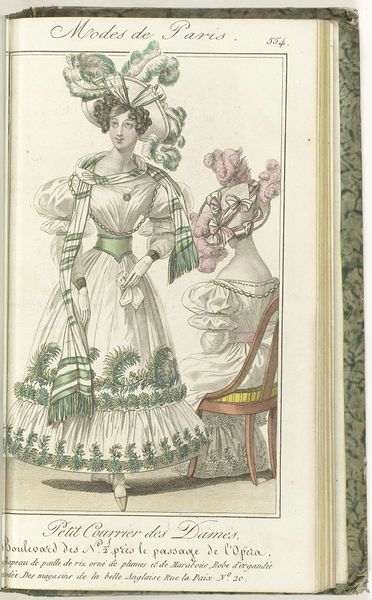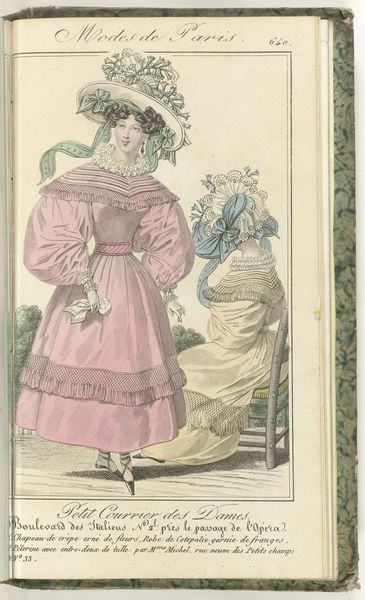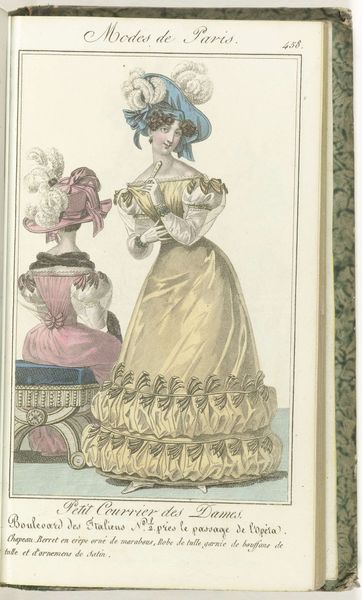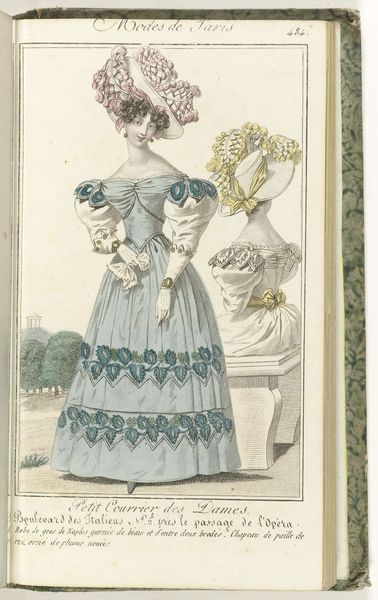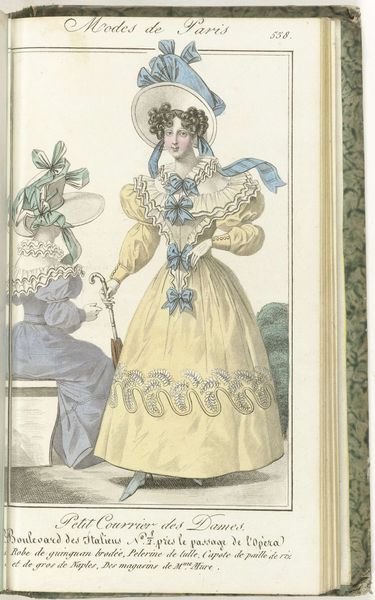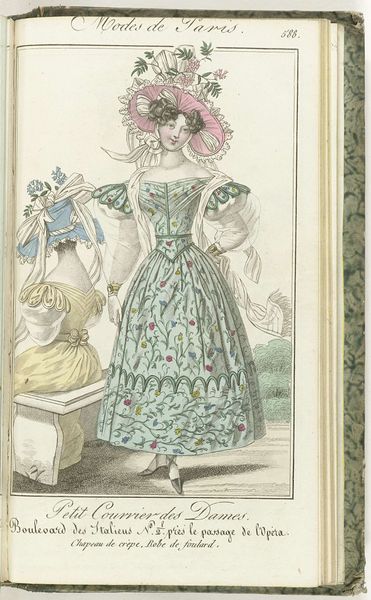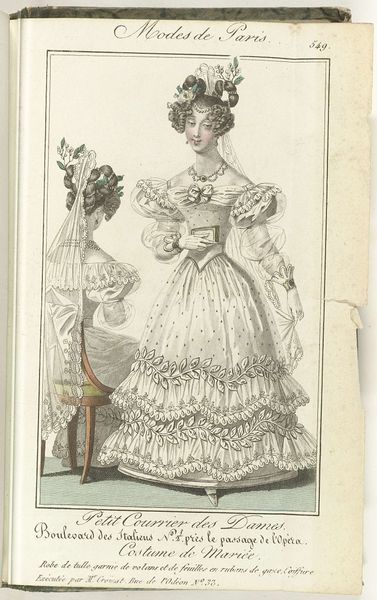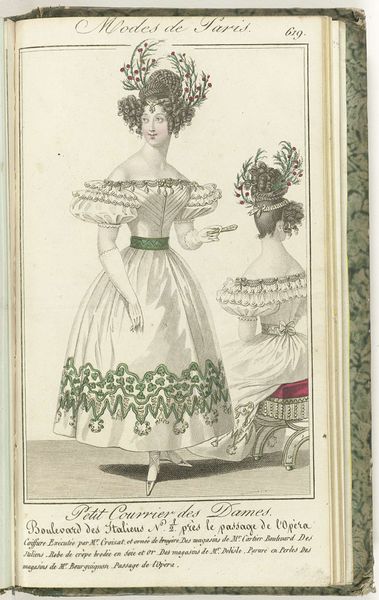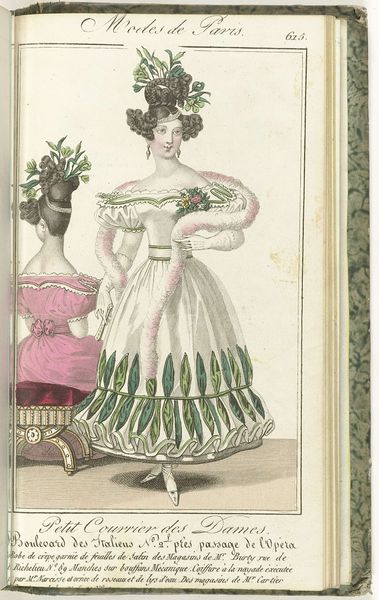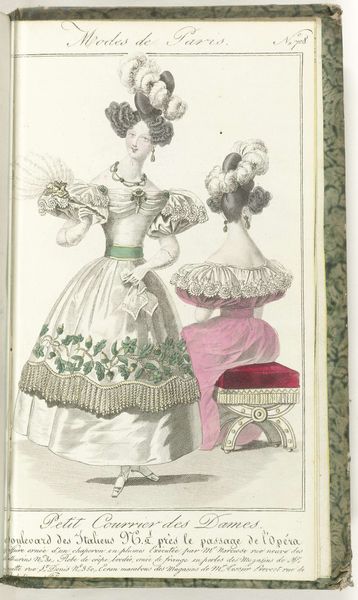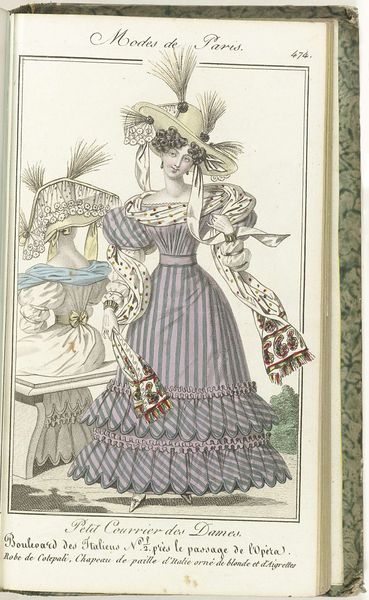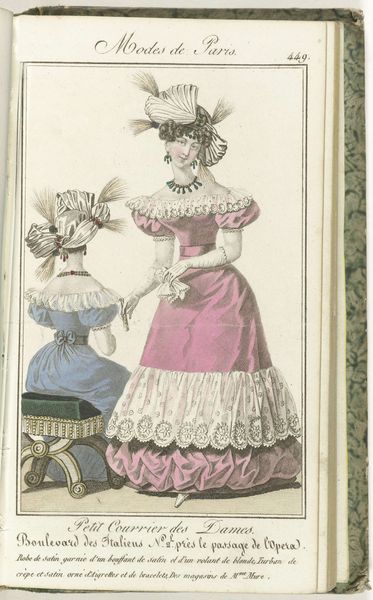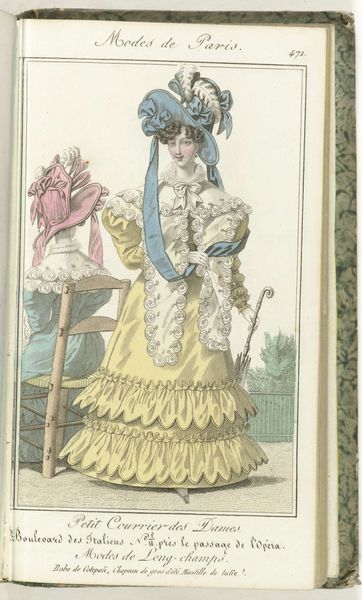
Petit Courrier des Dames, 5 juin 1828, No. 559 : Robe de gros de Naples... 1828
0:00
0:00
anonymous
Rijksmuseum
drawing, print, watercolor
#
portrait
#
drawing
# print
#
figuration
#
watercolor
#
romanticism
#
watercolour illustration
#
genre-painting
#
dress
Dimensions: height 201 mm, width 113 mm
Copyright: Rijks Museum: Open Domain
Curator: Here we have a print titled "Petit Courrier des Dames, 5 juin 1828, No. 559: Robe de gros de Naples...", dating back to 1828, housed at the Rijksmuseum. It presents a fashion plate from a Parisian journal. Editor: My immediate impression is one of lightness and almost absurd delicacy. The composition is dominated by these incredibly voluminous dresses and bonnets, rendered in soft watercolors. Curator: This image speaks volumes about the social expectations and roles assigned to women during the Restoration period in France. Fashion plates like this weren’t merely about clothing; they represented an aspirational lifestyle, connected to ideals of femininity and status. Editor: Agreed. But even viewing this through a lens of formal assessment, the interplay of vertical stripes and puffed sleeves creates an intriguing tension. The artist expertly balances the visual weight, preventing the excess from becoming overwhelming. Note how the seated figure provides compositional grounding. Curator: Indeed, the details signal a shifting social landscape. For instance, the "Robe de gros de Naples" being advertised points to emerging consumer cultures, where materials and styles denoted access and privilege tied to bourgeoning capitalism. Editor: Considering it further, this print serves as an intriguing study of line and form. Observe how the flowing lines of the gown contrast with the more geometric shapes of the bonnets. Also, the artist manipulates space through a calculated rendering of depth and shadow, adding dynamism. Curator: It prompts us to consider questions of labor, accessibility, and even agency. Who was consuming this image, and what message were they internalizing about their position in society? And how does the emphasis on frivolous consumerism intersect with broader concerns related to labor exploitation at the time? Editor: Ultimately, engaging with such art challenges our modes of perception. Curator: Agreed. Fashionable or oppressive? Beautiful or superficial? Perhaps it's both simultaneously, mirroring society's layered complexity.
Comments
No comments
Be the first to comment and join the conversation on the ultimate creative platform.
